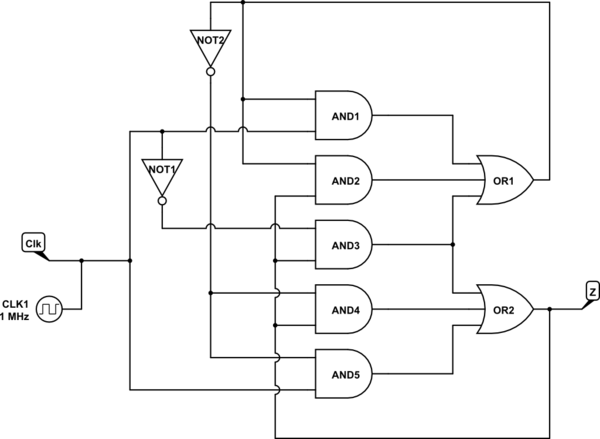The circuit in the original question contains 1 or more hazards or race conditions. As such, the circuit will only work properly if the delays within the circuit are properly controlled.
An asynchronous finite state machine with hazards (or race conditions) will, in general, work properly only if delays within the circuit are properly controlled. An asynchronous finite state machine without hazards (or race conditions) or with hazards which are "covered" (and hence not active) will perform properly if there is at any time only one signal which is changing, and which does not receive new inputs until the circuit has reached a stable state.
Such asynchronous finite state machines may be implemented in a number of ways, but one way to do so is with a sum-of-products combinatorial circuit with some of the outputs fed back as inputs.
In this answer, such a circuit will be shown. However, it is probably unfamiliar to many, and is certainly less familiar than other implementations of T flip-flops, such as the master-slave implementation, or the 6 nand gate implementation shown in another answer.
We start with an asynchronous finite state machine that we wish to implement:

The flow table for this state machine is given as:

We can assign variables and values to the states to give:

with the excitation table

The Karnaugh maps for Q, Y and Z are given as follows



If we were attempting to find the minimal implementation of a boolean function, we would calculate a minimal sum of prime implicants that cover the function under consideration. However, such a procedure would allow our implementation to have static 1 hazards. To avoid static 1 hazards, we use extra prime implicants (in this case all of the prime implicants). This gives our combinatorial functions
\$Q = z\$
\$Y = x'z + xy + yz\$
\$Z = x'z + xy' + y'z\$
Finally, implementing this circuit as a sum of products with feedback:

simulate this circuit – Schematic created using CircuitLab



















